How feminine clothing should fit, according to experts
Posted by admin on
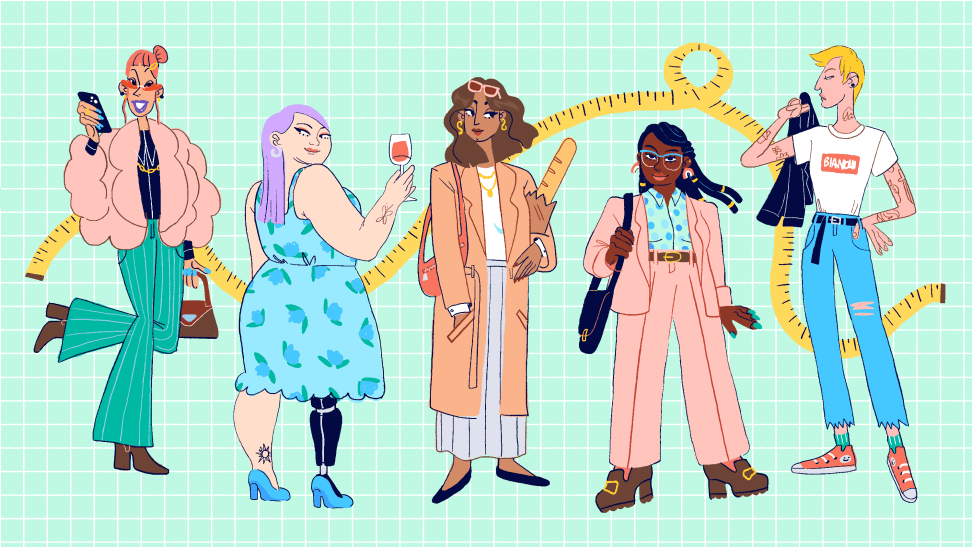 — Recommendations are independently chosen by Reviewed’s editors. Purchases you make through our links may earn us a commission.
— Recommendations are independently chosen by Reviewed’s editors. Purchases you make through our links may earn us a commission.Let’s say you’re online shopping for new clothes. You find some garbs you really like—a pair of jeans, a nice button-up shirt—and place an order at your favorite retailer. Sometime later, they show up, you try them on, you take a look in the mirror, and… you aren’t positive they should look like that on your body. Maybe those jeans you ordered are just way too long or look frumpy at the waist. Maybe the sleeves on your shirt are covering up too much of your hands. You know you ordered your typical size, so, you start to think, Is it me? Am I the problem here?
Well, no, it’s not you at all, and ironically, that is the problem. Buying off the rack—or, in this case, off the internet—means grabbing a piece of clothing that’s cut to that brand’s idea of sizing, not to your specific frame. Sizes aren’t a universal standard, either—companies have different cuts, sizing charts, and styles that vary drastically between brands, garment type, and even seasons. For instance, what fits you at H&M won’t fit quite as right as J.Crew.
So, how can you ensure that your clothing fits you well? And how should those clothes fit, anyway? To help answer these questions, we tapped two experts within the independent tailoring world: Stacie Pettersen, head stylist and manager at Beyond Bespoke Tailors in New York City, and Joe Holsgrove, coatmaker and tailor at coat maker at Dege & Skinner located on Savile Row in central London, which has been known for its traditional men’s tailoring since the late 18th century.
How should jeans fit?
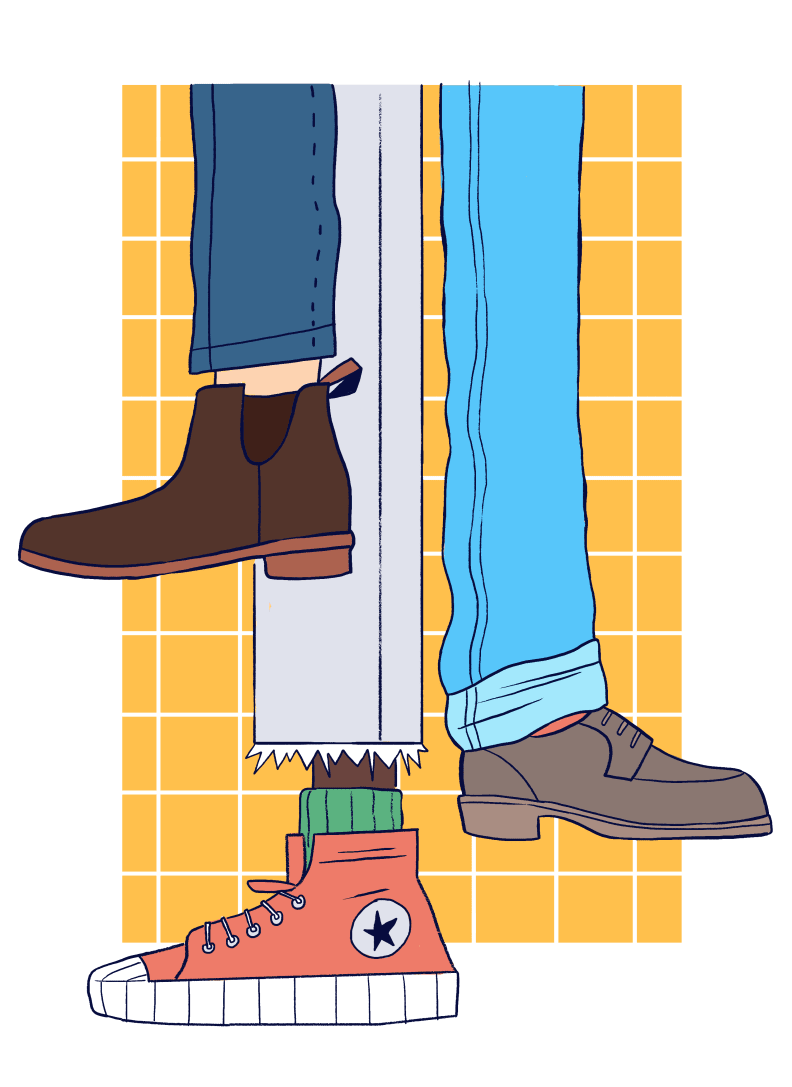
A jeans' fit is beholden to current style trends, but the waistline should fit without the use of a belt.
Finding the right fit when jean shopping is vital. Of course, as Pettersen and Holsgrove point out, the “correct” fit—like how tapered straight-leg jeans should be, or how big wide-leg jeans should look—is beholden to current styles and trends. But if you’re trying to figure out if jeans fit your bottom well, you should look to your waistline.
“The waist should fit completely—there should be no gaps at the waistband,” Pettersen says. “A belt is just jewelry for your clothes. You shouldn't have to use one to keep your pants up.” Pettersen says how the legs fit is entirely up to the wearer, but she prefers a tapered fit while working at Beyond Bespoke Tailors. With so many styles of jeans, it’s hard to say what will work for everyone. She says that the hem, however, should always be clean and fit comfortably around boots just as well as a flat shoe, without any extra fabric hanging out.
Holsgrove warns against skinny jeans that appear “sprayed on” the body and restrict movement: “There’s nothing worse than being opposite somebody and able to see the contents of their pockets.” He jokes: “You should be able to store things comfortably without people being able to read the dates on your coins.”
He says that if you have a prominent seat and thigh area, you’re bound to be more comfortable in a more generous cut of jeans, like a straight leg. Any concern for bagginess can be solved with a tailor’s taper from the knee down, which is a minor alteration that’ll improve the appearance of excess fabric.
For those with wide hips or thick thighs who have trouble finding pants or jeans that fit well, Pettersen suggests buying pieces that can comfortably cover the largest part of your body. From there, you can alter the piece and size down in other areas such as the waistline, legs, and hem. Alternatively, you can also have your tailor make you a custom pair of jeans.
How should slacks fit?
Worn in wedding and office environments alike, slacks—also referred to as trousers and dress pants—have been a signal of formality since the 19th century. The garment has a longstanding connection with celebrating important events, so it’s a surprise to see Pettersen and Holsgrove disagree on how they should fit on the body.
At Beyond Bespoke Tailors, Pettersen is a fan of slacks that are well-fitted to the body with tapered legs. Like jeans, belts shouldn’t be required, but a no break or small break—the area between your hem and shoes—is appropriate.
At Dege & Skinner, Holsgrove prefers to see relaxed slacks. “The very term ‘slack’ derives from the Saxon word for ‘loose’, and as such, these garments should fit that way,” he says. “They are usually always a generous cut, but more recently it has been noted that fashion houses have slightly tapered the legs to promote a slimmer profile without being too contoured.”
How should skirts fit?
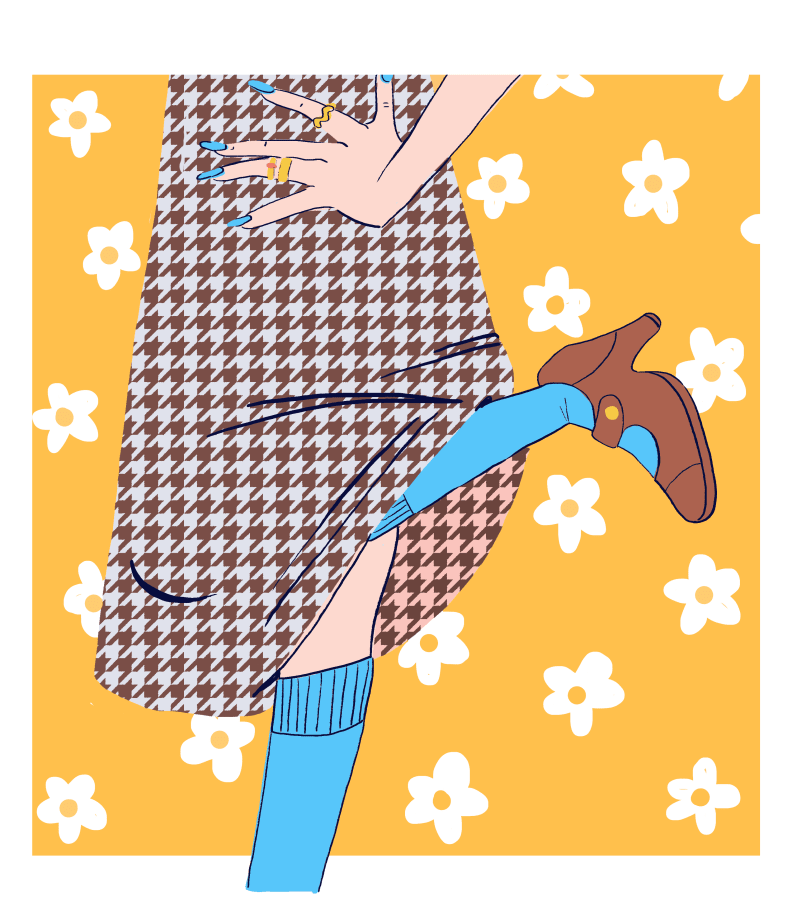
Knee-length skirts are most appropriate for business and formal environments.
The fit of a skirt is subject to the environment in which it is being worn and one’s personal preference,” says Holsgrove. “Despite the likes of Mary Quant pioneering the mini-skirt in 1960s London, it is often deemed inappropriate for a lady’s skirt to be above the knee in a business environment. Formal events such as Henley Regatta and Royal Ascot also require a knee-length skirt to enter certain enclosures, as well as many of London’s famed member’s club dining rooms having dress codes.”
Pettersen’s answer is simplified: “Skirts are very much like jeans. With so many different styles and variations, it is hard to say what is right or wrong."
What is a pant break?
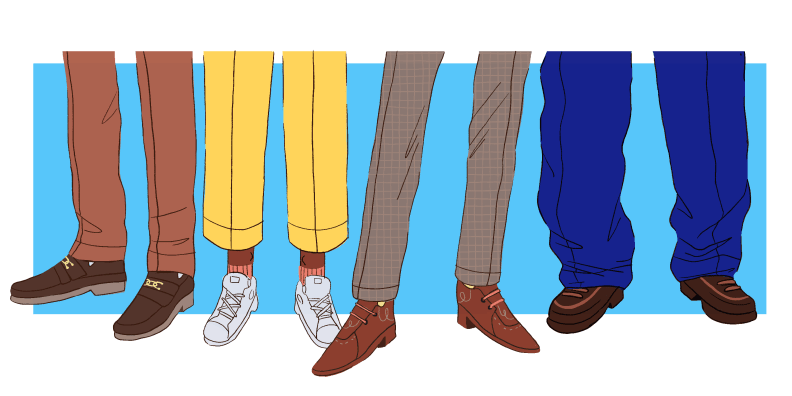
Pant breaks from left to right: small break, no break, medium break, large break.
With slacks, chinos, and jeans, tailors sometimes refer to something called a pant break, which is the fold of fabric at the bottom of the leg that covers your shoes. As Pettersen explains, your tailor can provide the following breaks:
* No break: No fabric bunching at the bottom of your hem
* Small break: A small gathering at the bottom of the pants
* Medium break: Even more gathering at the hem
* Large break: A large amount of fabric gathering at the bottom (which, as Pettersen says, looks sloppy)
What Holsgrove and other Savile Row tailors prefer to see is a very small break with plain bottom (or no cuff) trousers, with the hem meeting the heel of your shoe, and the front of the hem angling upwards about an inch towards the toe box. Ultimately, pant breaks are entirely up to the wearer’s preference.
How should a long dress fit?
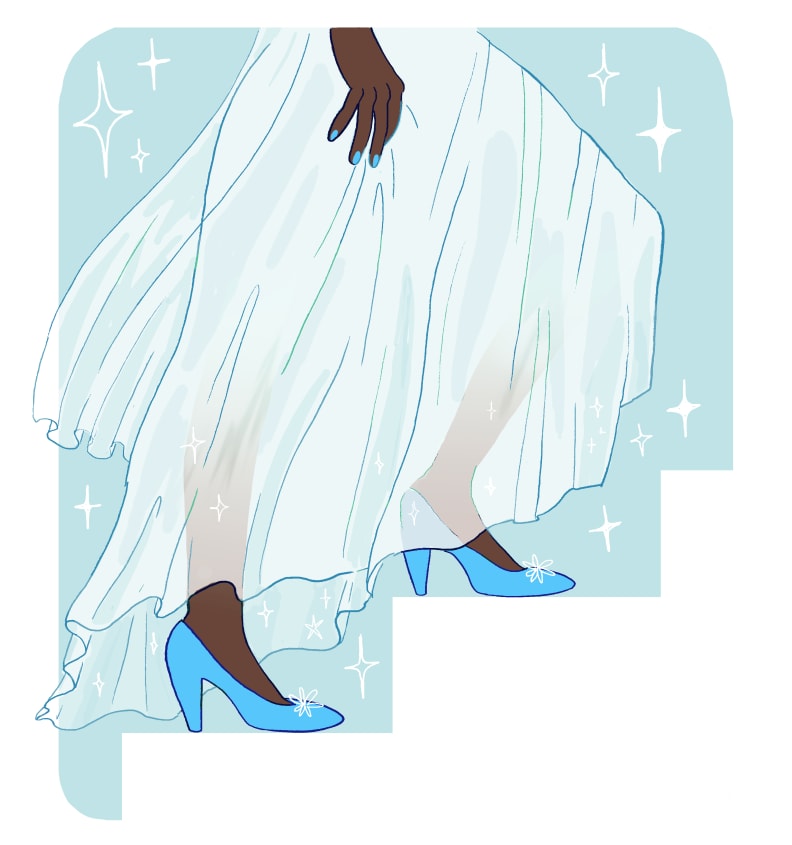
A long-length dress must never catch onto heels or shoes, or drag at the hem.
An evening dress, or a formal dress that’s long in length, is subject to the design of the dress. Holsgrove points out that many fashion houses and designers have their own preferences and styles, but an evening dress should traditionally be floor-length. Planning to wear heels with it? Try them on along with the dress to ensure it’s easy to walk in without the dress catching or dragging at the hem.
Pettersen says the dress should just about graze the floor, but not touch it—only create the illusion that it is. A person shouldn’t be able to see the footwear underneath an evening dress unless they are taking a step. Hemming can be performed to make sure the dress doesn’t scrape the ground, but like many items on this list, it comes down to personal preference.
How should a button-down shirt fit?
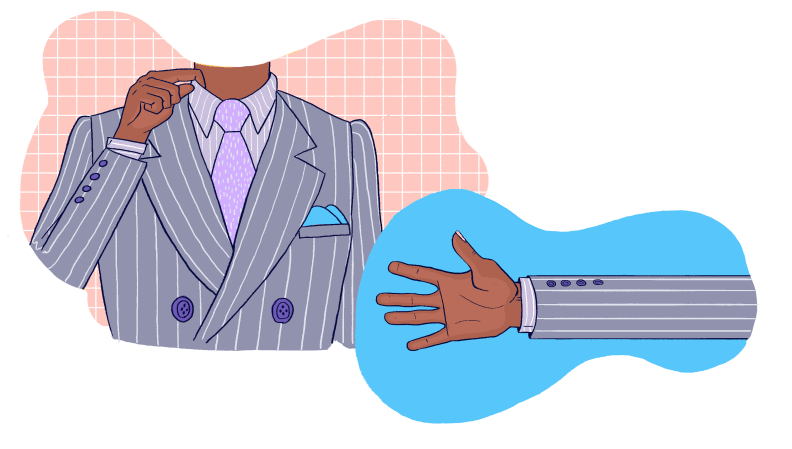
For button-down shirts, there should be one finger’s worth of room between the collar and your neck.
Here's a cheat code to knowing if a formal long-sleeve shirt fits just right: Pettersen says that there should be one finger’s worth of room between the shirt’s collar and your neck. This ensures you’re not choking yourself in your proper attire. Buttoned sleeves should land where the base of your wrist meets your hand. There must also be about a half-inch of gathered fabric near your wrist so that when you extend your hand, it doesn’t show any forearm. Holsgrove, however, advises that sleeves should meet the radial fossa—the triangular depression at the base of one’s thumb—without the need to pull them down. In either case, sleeves should be tapered to fit your body type.
For those with breasts, finding a button-down shirt that feels right can sometimes be difficult. Pettersen suggests buying a shirt that fits well around your bust and then make adjustments to it later. You can tailor the shirt in other areas to remove excess fabric, easily sizing down the piece without worrying about choking your bosom.
Extra fabric can sometimes gather at the back of your shirt. This is common and a result of a curved spine, uneven shoulders, one arm that’s longer than the other, or a medical condition. To clean up the appearance, a tailor can help with tapering and adding darts, or small tucks of fabric, into the shirt to make you appear symmetrical. Overall, the body of the shirt should be comfortable and offer an ease of movement that doesn’t show straining at the buttons.
How should a suit jacket fit?
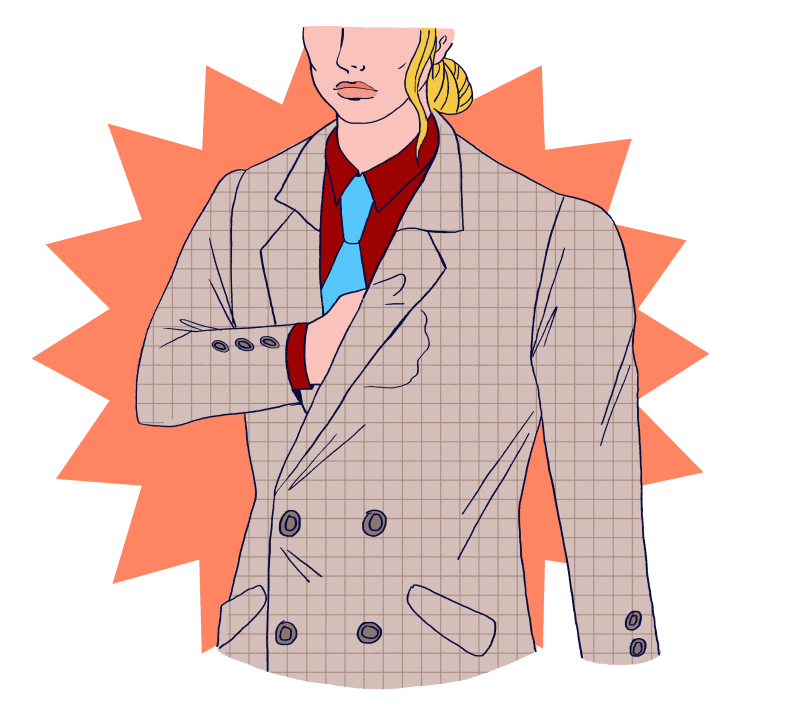
For a well-fitted jacket body, you should be able to grab the lapel and fit one fist inside the front of the jacket near the top button. If there’s room for more than your fist, it’s too big.
An ill-fitting jacket is easy to tell, according to Holsgrove: If a jacket looks strained, it’s too small. He also says the top of the sleeves is another indicator of a small jacket; if the shoulders break out beyond the shoulder seam, it’s too small. When in doubt, It’s best to get a larger-sized jacket and have a tailor taper it and bring in shoulder seams than a smaller jacket that can’t be worked on.
It’s important for a jacket to be fitted in the sleeves, shoulders, and body, as they’re the most important parts of a fit, Pettersen explains. The shoulders should fit flush to your upper bicep while the sleeves should be fitted without any pulling or rippling of fabric. For a well-fitted jacket body, you should be able to grab the lapel and fit one fist inside the front of the jacket near the top button. Any room that fits more than your fist indicates that it’s too big.
How should a vest fit?
A vest, as Pettersen says, should fit like a mini jacket. It’s important to capture a visually great fit around the chest and sides.
Just like with button-down shirts, Holsgrove has an easy way to see if a vest fits well: There must never be a gap between the bottom of the vest and the top of your trouser waistband. “Seeing a small amount of somebody’s shirt here is greatly unflattering, and can totally distract from a whole outfit,” he says. Although vests are typically close-fitting, you still need to look and feel comfortable. Go for a fit that remains snug without putting any strain on buttons. He adds: "There should be a strap and buckle on the back of a vest to allow for size adjustment at the waist—which can also be loosened after a good meal!”
What clothing should—and shouldn’t—be tailored?
It’s a common belief that tailoring is only needed for hemming pants, but as Holsgrove explains, a tailor can do much more with their craft. “The look and feel of garments can be totally transformed,” he says, “not only from a fit perspective but also physical appearance.” For example, a simple move like changing the buttons on your favorite shirt can bring a new lease of life to it.
So what can you get tailored? Everything and anything. Contrary to popular belief, you can tailor casual clothing like T-shirts, sweaters, and sweatpants. Pettersen tells me Beyond Bespoke has seen an uptick in tailoring loungewear since the start of the pandemic, including robes and pajama pants. Although Holsgrove advises prioritizing your formal garments, Pettersen states: “If you love it, we don’t judge. When your clothes fit you better, you feel better and look better. Why not tailor it if it's important to you?”
The product experts at Reviewed have all your shopping needs covered. Follow Reviewed on Facebook, Twitter, Instagram, TikTok, or Flipboard for the latest deals, product reviews, and more.
Prices were accurate at the time this article was published but may change over time.
